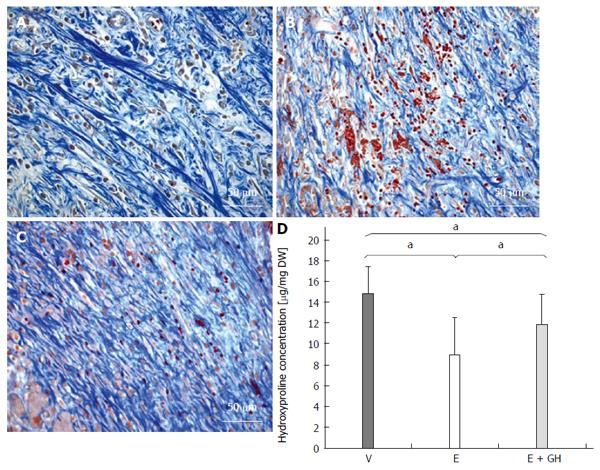Copyright
©The Author(s) 2016.
World J Gastroenterol. May 7, 2016; 22(17): 4321-4329
Published online May 7, 2016. doi: 10.3748/wjg.v22.i17.4321
Published online May 7, 2016. doi: 10.3748/wjg.v22.i17.4321
Figure 3 Azan staining from the anastomotic region.
The collagen fibres appear blue. Everolimus treated animals show a disturbed arrangement of collagen fibres, which is antagonized by additional human growth hormone (hGH)-treatment (A-C). A: Vehicle; B: Everolimus 3.0 mg/kg; C: Everolimus 3.0 mg/kg + hGH 2.5 mg/kg. Hydroxyproline concentration in the anastomotic region in mg per mg dry weight (DW). The decrease of hydroxyproline under everolimus-treatment is reduced by additional hGH-treatment (D) (magnification × 400). V: Vehicle, E: Everolimus 3.0 mg/kg, E + GH: Everolimus 3.0 mg/kg + hGH 2.5 mg/kg; aP < 0.05, vs E group, V vs E + GH group.
- Citation: Küper MA, Trütschel S, Weinreich J, Königsrainer A, Beckert S. Growth hormone abolishes the negative effects of everolimus on intestinal wound healing. World J Gastroenterol 2016; 22(17): 4321-4329
- URL: https://www.wjgnet.com/1007-9327/full/v22/i17/4321.htm
- DOI: https://dx.doi.org/10.3748/wjg.v22.i17.4321









